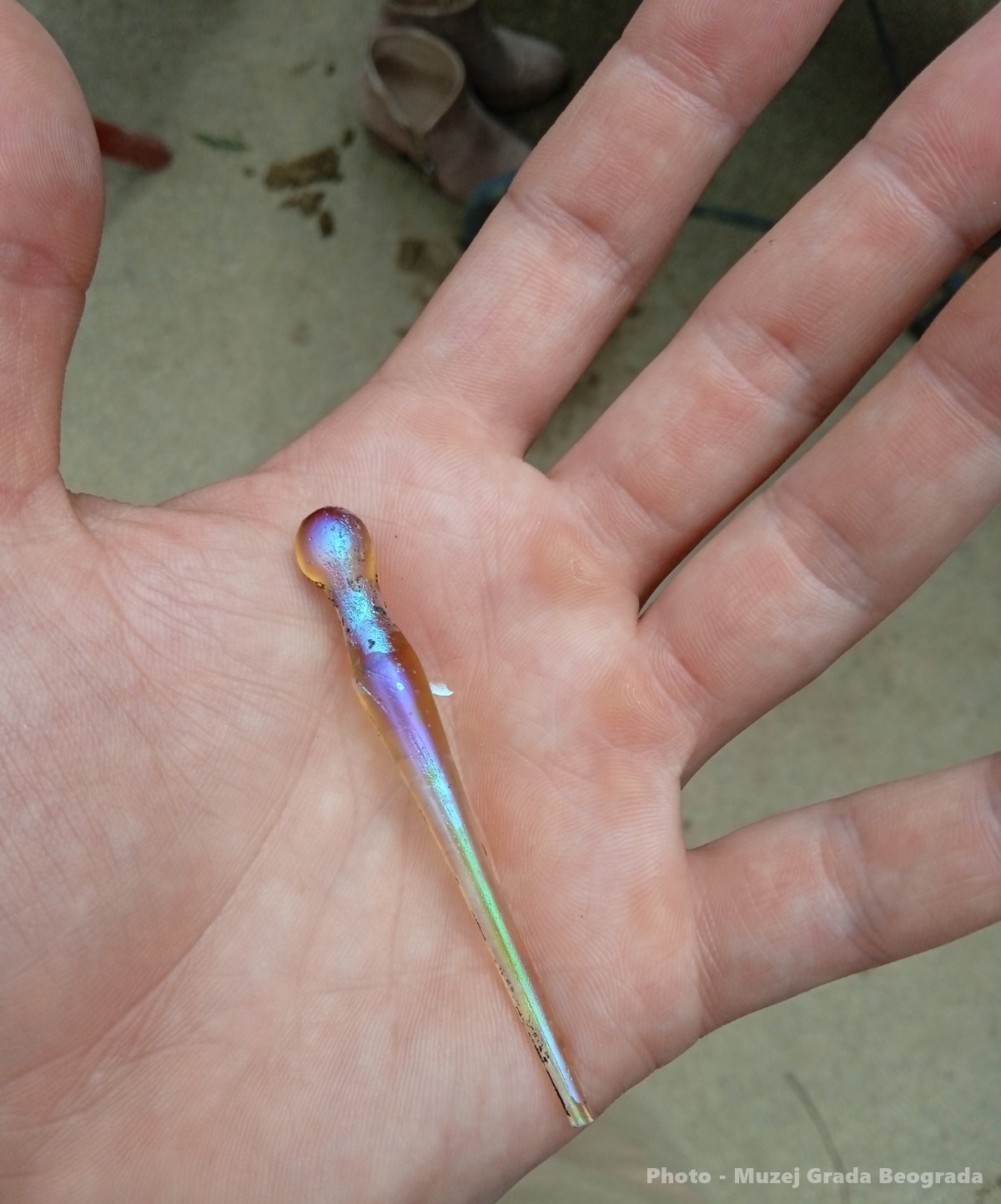Zajímavé 👍
Roman tombs and a well-preserved aqueduct were discovered in Belgrade
Categories: Nálezy nejenom s detektorem kovů ve východní Evropě
An archaeological survey of the historic centre of Belgrade, near the Serbian Parliament building, has uncovered a Roman necropolis and part of a Roman aqueduct. So far, fourteen Roman tombs of different burial styles with grave goods from the 3rd and 4th centuries AD have been uncovered.
The area investigated was the south-eastern part of ancient Singidunum, a settlement founded by the Celtic Scordi in the 3rd century BC. It was conquered by the Romans in 75 BC and gained importance through its association with an important fortress defending the Danube Limes, a Roman military frontier following the European highway. In 169 AD, it was granted city rights by Hadrian and its inhabitants were granted Roman citizenship. In 332, the future emperor Jovian was born here. The Roman Legio IV Flavia Felix was based in Singidun from the reign of Domitian 86 AD until the Hunnic invasions in the mid-5th century, when the city was burned and its inhabitants enslaved.
Archaeological excavations began in March this year. First, the remains of buildings from the inter-war period, which were destroyed in the Allied bombing in 1944, were examined. In other layers, archaeologists also discovered traces of Belgrade's 17th and 18th century settlement. However, they had to wait until the very end of the research to find the most interesting finds in the form of a Roman aqueduct and tombs.
"Unfortunately, all the tombs we have examined so far were looted in earlier periods. However, in addition to scattered human remains, some grave goods, coins and jewellery were left in them. On the basis of these, we can reliably say that this part of the necropolis was used from the middle of the 3rd to the end of the 4th century. In one of the sarcophagi we discovered parts of a gold necklace with a semi-precious green stone (emerald) and a very well-preserved glass fibreThis is a unique find," said Milorad Ignjatović, the head of the research and curator of the Belgrade City Museum.
Two of the tombs are rectangular with brick walls and vaulted ceilings, and two form brick sarcophagi. Four of the tombs have stone sarcophagi, which were only available to high-ranking and wealthy people. One of the tombs is a so-called "spoglia cist", a tomb made of recycled older tombs. A fragment of the tombstone refers to a Roman soldier who died at the age of 46 after serving 30 years in the legions. In addition, two intact skeletons were found buried simply in the pit. Their arms were crossed on their chests and the graves were oriented in an east-west direction - probably Christian burials.
Tombs were looted in ancient times, but thieves did not take everything. Inside one of the stone sarcophagi, under the skeletal remains, lay a fragment of a gold necklace with a green semi-precious stone. Another interesting artefact was a rainbow glass hairpin in excellent condition. Hairpins were usually metal or bone; this glass version is the only one of its kind ever found in Belgrade.
Two weeks before the excavation of the Roman graves, a relatively long and well-preserved section of aqueduct was discovered. The presence of a necropolis in this area was known - other Roman tombs were uncovered nearby 40 years ago, but the over 60-metre-long aqueduct with its original lead pipes was an unexpected find. Archaeologists believe it was a younger 3rd or 4th century offshoot of the original aqueduct built by Vespasian in the 1st century. It probably fed fresh water directly into the centre of the city's legion.
Roman Nemec
Sources: livescience.com, sveoarheologiji.com

Unique hairpin made of iridescent glass

tombstone with inscriptions reused for the construction of the sarcophagus

excavation site

60-metre aqueduct with lead pipes

vaulted brick tomb

fragment of a gold necklace

Christian burial

stone sarcophagus
The article is included in categories:



